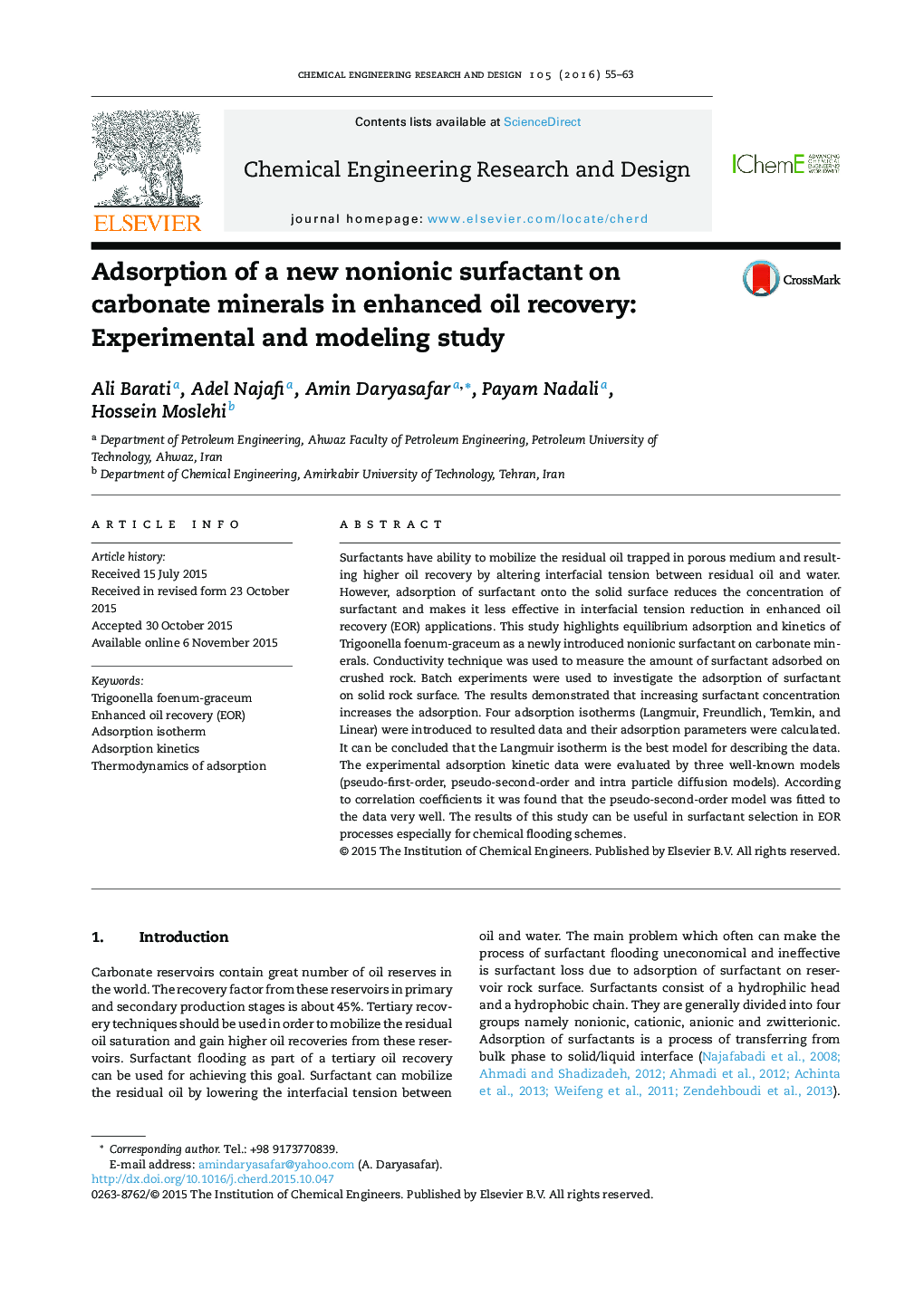| Article ID | Journal | Published Year | Pages | File Type |
|---|---|---|---|---|
| 620337 | Chemical Engineering Research and Design | 2016 | 9 Pages |
•Equilibrium adsorption and kinetics of Trigoonella foenum-graceum on carbonate rock surface was determined.•Langmuir isotherm was the best model for equilibrium adsorption behavior of Trigoonella foenum-graceum.•The adsorption kinetic behavior of surfactant was best suited by pseudo-second-order model.•Increase in temperature decreases the equilibrium adsorption of surfactant and the process is exothermic.
Surfactants have ability to mobilize the residual oil trapped in porous medium and resulting higher oil recovery by altering interfacial tension between residual oil and water. However, adsorption of surfactant onto the solid surface reduces the concentration of surfactant and makes it less effective in interfacial tension reduction in enhanced oil recovery (EOR) applications. This study highlights equilibrium adsorption and kinetics of Trigoonella foenum-graceum as a newly introduced nonionic surfactant on carbonate minerals. Conductivity technique was used to measure the amount of surfactant adsorbed on crushed rock. Batch experiments were used to investigate the adsorption of surfactant on solid rock surface. The results demonstrated that increasing surfactant concentration increases the adsorption. Four adsorption isotherms (Langmuir, Freundlich, Temkin, and Linear) were introduced to resulted data and their adsorption parameters were calculated. It can be concluded that the Langmuir isotherm is the best model for describing the data. The experimental adsorption kinetic data were evaluated by three well-known models (pseudo-first-order, pseudo-second-order and intra particle diffusion models). According to correlation coefficients it was found that the pseudo-second-order model was fitted to the data very well. The results of this study can be useful in surfactant selection in EOR processes especially for chemical flooding schemes.
Graphical abstractSurfactants have ability to mobilize the residual oil trapped in porous medium and give higher oil recovery by altering interfacial tension between residual oil and water. However, adsorption of surfactant onto the solid surface reduces the concentration of surfactant and makes it less effective in reduction of interfacial tension in enhanced oil recovery (EOR) applications. This study highlights equilibrium adsorption and kinetics of Trigoonella foenum-graceum as a newly introduced nonionic surfactant on carbonate minerals. Conductivity technique was used to measure amount of surfactant adsorbed on crushed rock. Batch experiments were used to investigate the adsorption of surfactant on solid rock surface. It is observed that increasing in surfactant concentration increases the adsorption. Four adsorption isotherms (Langmuir, Freundlich, Temkin, and Linear) were introduced to our data and their adsorption parameters were calculated. We conclude that the Langmuir isotherm is the best model for describing our data. The experimental adsorption kinetic data were evaluated by three well-known models (peudo-first-order, pseudo-second-order and intra particle diffusion models). According to correlation coefficients it was found that the pseudo-second-order model was fitted to our data very well. The results of this study can be useful in surfactant selection in EOR processes especially for chemical flooding schemes.Figure optionsDownload full-size imageDownload high-quality image (108 K)Download as PowerPoint slide
